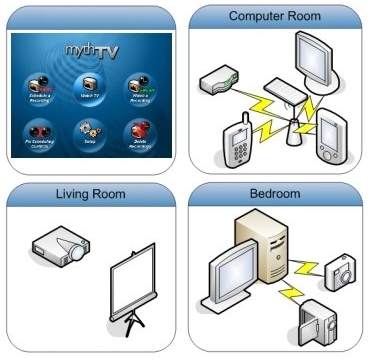MythTV: The Abyss of Convergence Freedom
Introduction
MythTV unites several types of informational technology.
What good is any media-centric application suite if it plays only by itself? The concept of convergence implies open communications, shared information and a manner of information exchange that delivers the essence of networking. This fundamental characteristic is found in Bluetooth-enabled phones and PDAs that synchronize and distribute files in a casual, easygoing manner. Why then should your television in the den not be able to access audio and video files from your home office computer?
In the retail market, Windows MCE comes with media extenders, which are small stand-alone custom-built units designed to act as frontend clients to an existing MCE installation. It is this very separation of duties - or specialization, if you'll permit the term - that defines basic networking concepts applicable to any worthy media center application suite.
MythTV departs from the traditional cut-and-dried relationship that MCE forces upon its end-users. Instead, MythTV is designed to compartmentalize functionality in two distinct categories across two separate modes of operation, called frontend clients and backend servers. Understanding these concepts is crucial to implementing MythTV. This notion also redefines the way we understand local media sharing, and is probably where most people quickly run into trouble. This article proffers an explicit inspection of MythTV's underlying network architecture, which is one of the key aspects that both sets it apart from and vaults it above other similar offerings.
Join our discussion on this topic
Get Tom's Hardware's best news and in-depth reviews, straight to your inbox.
Ed Tittel is a long-time IT writer, researcher and consultant, and occasional contributor to Tom’s Hardware. A Windows Insider MVP since 2018, he likes to cover OS-related driver, troubleshooting, and security topics.

